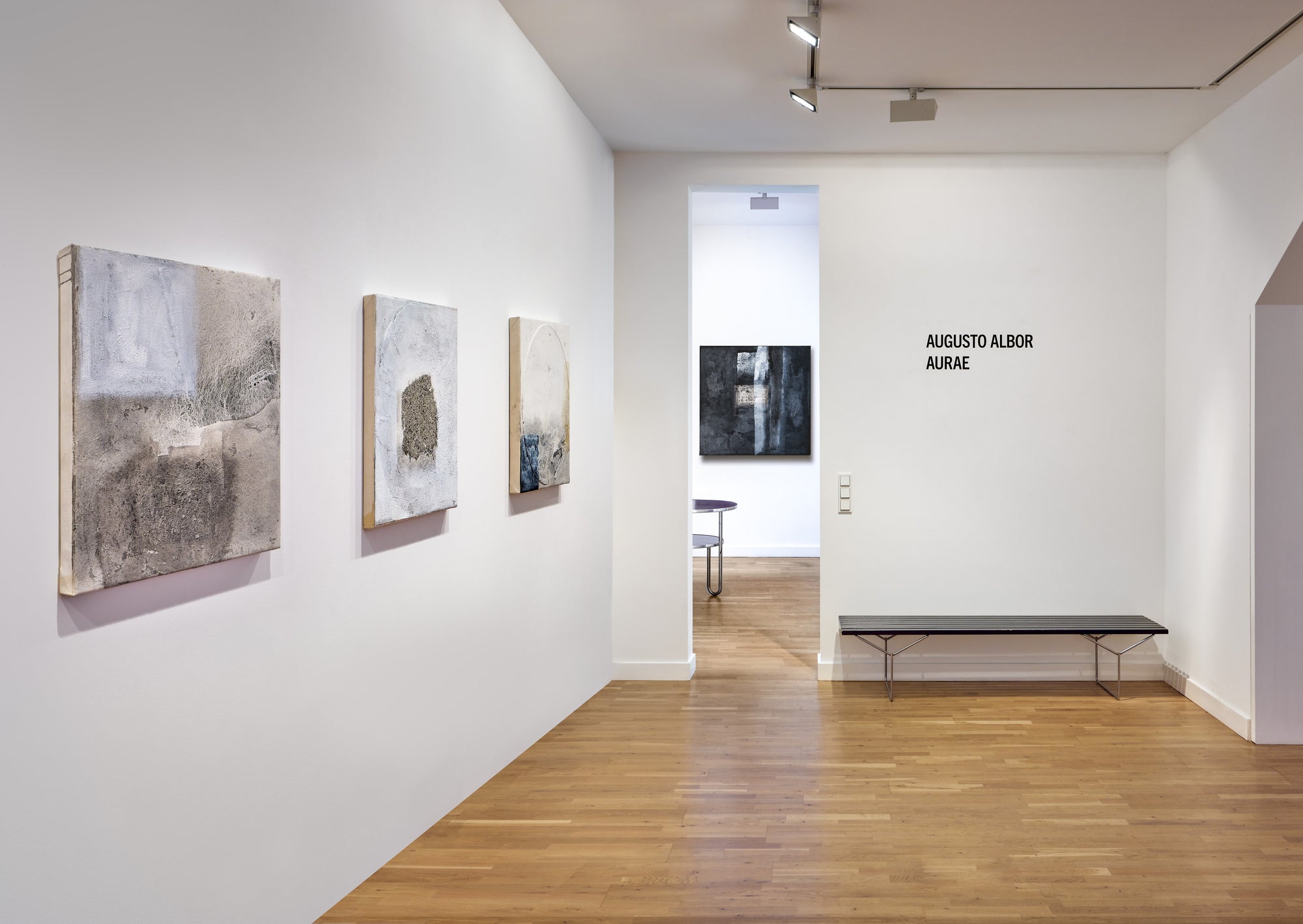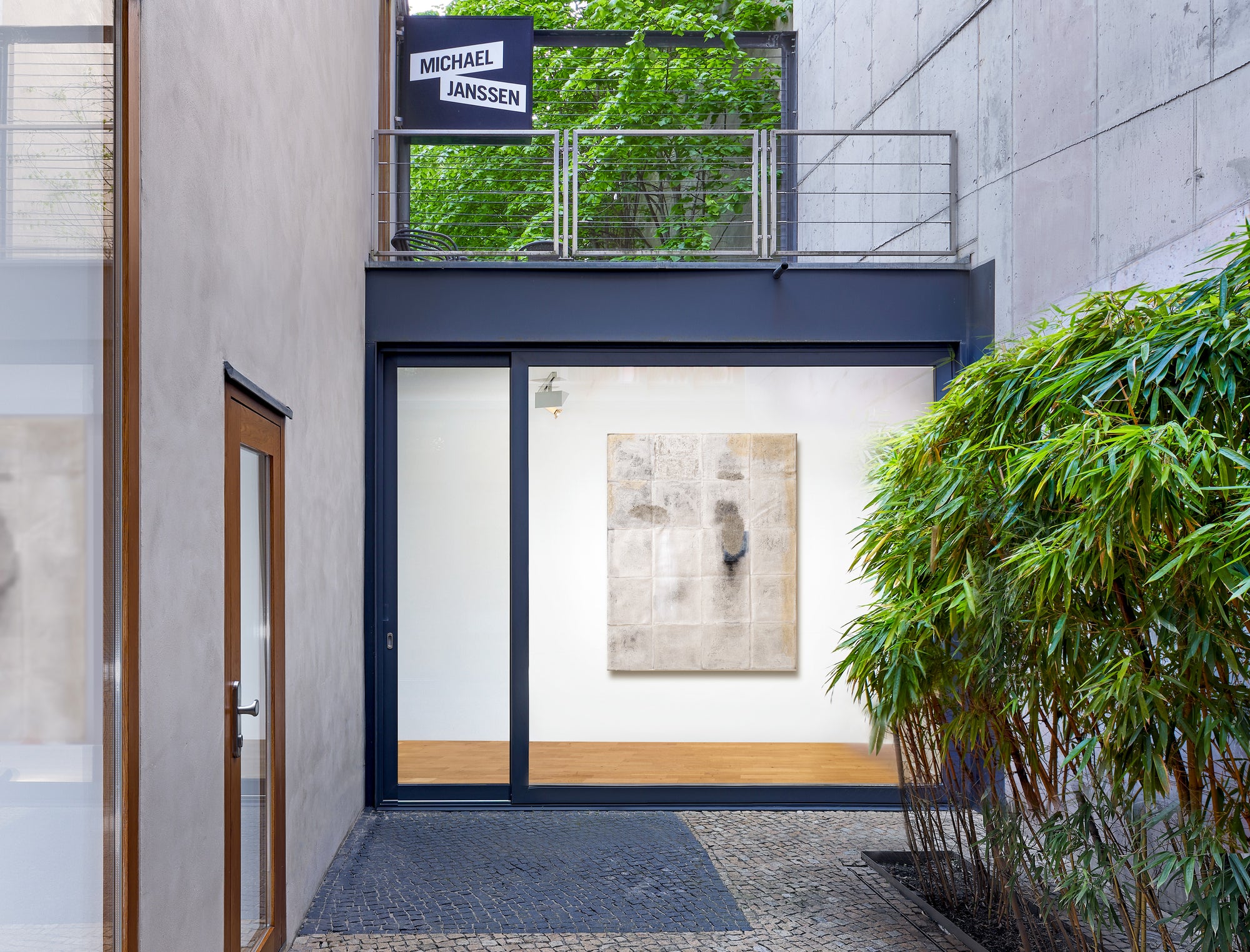Augusto Albor - Aurae
12 September—15 December 2024
Opening: 12 September, 6—9 pm
- Download: Press Release ( EN )
- Visit artist page: Augusto Albor
- Works in the exhibition
In his 1936 essay "The Work of Art in the Age of Mechanical Reproduction," German cultural critic Walter Benjamin describes the "aura" —the unique presence that a work of art possesses— as a symbol of authenticity, the soul of an art object in the era of mass reproduction. Filipino artist Augusto ‘Gus’ Albor, known for his over 50-year trajectory in minimal non-objectivism, uses this concept to explore the transcendent qualities of abstraction in his new solo show at Michael Janssen.
Aurae gathers a series of the artist’s latest paintings, inspired by his interest in the metaphysical. A true disciple of meditation in transit, Gus Albor channels his artistic intuition into distilled mental, emotional, and spiritual energy fields that shape the distinctive atmospheres emanating from the artworks. He encircles a vast realm of psychic and experimental territory, transforming it into a substantial yet ethereal minimalist framework. The refined formalism of his sculptural paintings is characterized by the utmost subtlety; soft transitions, and muted monochromatic harmonies are bathed in an intangible ethos of enigma, mystery, myth, and ritual.
The organic breathing space in Albor’s canvases is created through a combination of floating blotches of color with more architectonic elements innate to neoplasticism. Sophisticated superimpositions of different geometries and textures create new spatial dynamics that enrich the visual narrative of the paintings. The artist’s particular approach to color—choosing a restrained, neutral palette of grays and beiges and manipulating their sensorial potential into interplays of density or translucency—transforms non-objectivism into an all-encompassing objectivism that unites the material and immaterial to organically bridge the world of things and people. The paintings presented in the exhibition transform defined geometric shapes into sublime emanations that transcend the canvas, resonating with the aura of the viewer.
With his immersive and contemplative non-linear compositions, Gus Albor’s paintings might be seen as belonging to the same lineage as those of well-known masters like Mark Rothko, Wassily Kandinsky, Piet Mondrian, and Josef Albers. While Albor’s well-defined, non-figurative, and highly cognitive style embodies the universality of abstract visual language, it also reveals the unique character of the Philippine art scene, which flourished with painters such as Fernando Zóbel, Arturo Luz, Lao Lianben, and Florencio Concepcion—the latter being cited by Gus Albor as his greatest artistic influence.
Many Filipino artists working during the 1960s and 1970s had to navigate the boundaries between so-called ‘experimental’ practices, the cultural politics of the Marcos regime, and international discourses on the avant-garde. Their pictorial language became a reflection of a new globalized identity in contemporary art, exploring the political through material and texture. At the same time, abstraction allowed these artists to deterritorialize the post-colonial notion of the Philippines, which had been vicariously projected through Euro-American models, and to find new artistic aspirations within the genre. In this context, the legacy of Augusto Albor, invested in revealing the metaphysical life of non-objectivism, is enveloped in an aura of authenticity—one that can sometimes be visually grasped but is always acutely felt.
Text by Karina Abdusalamova




